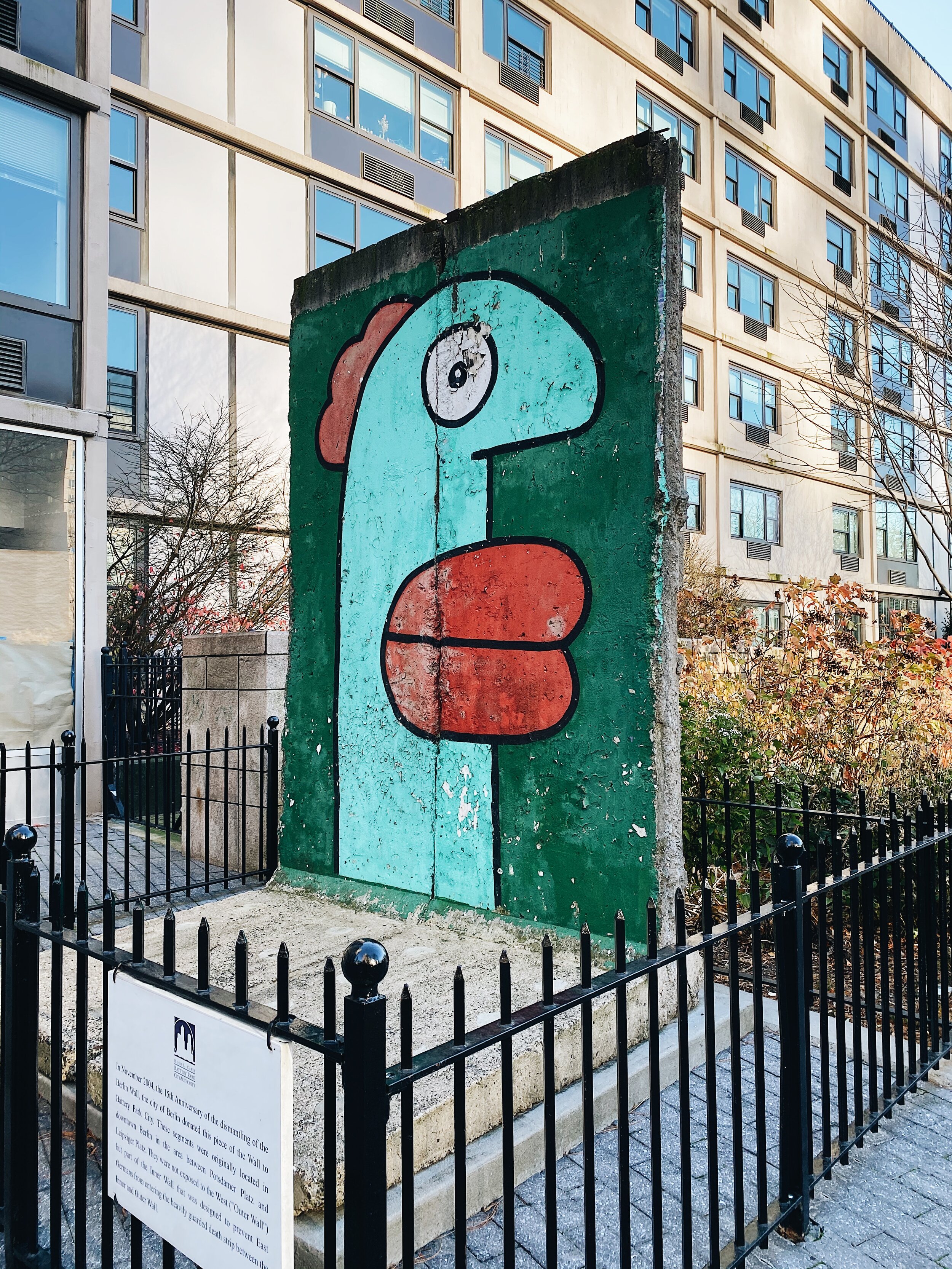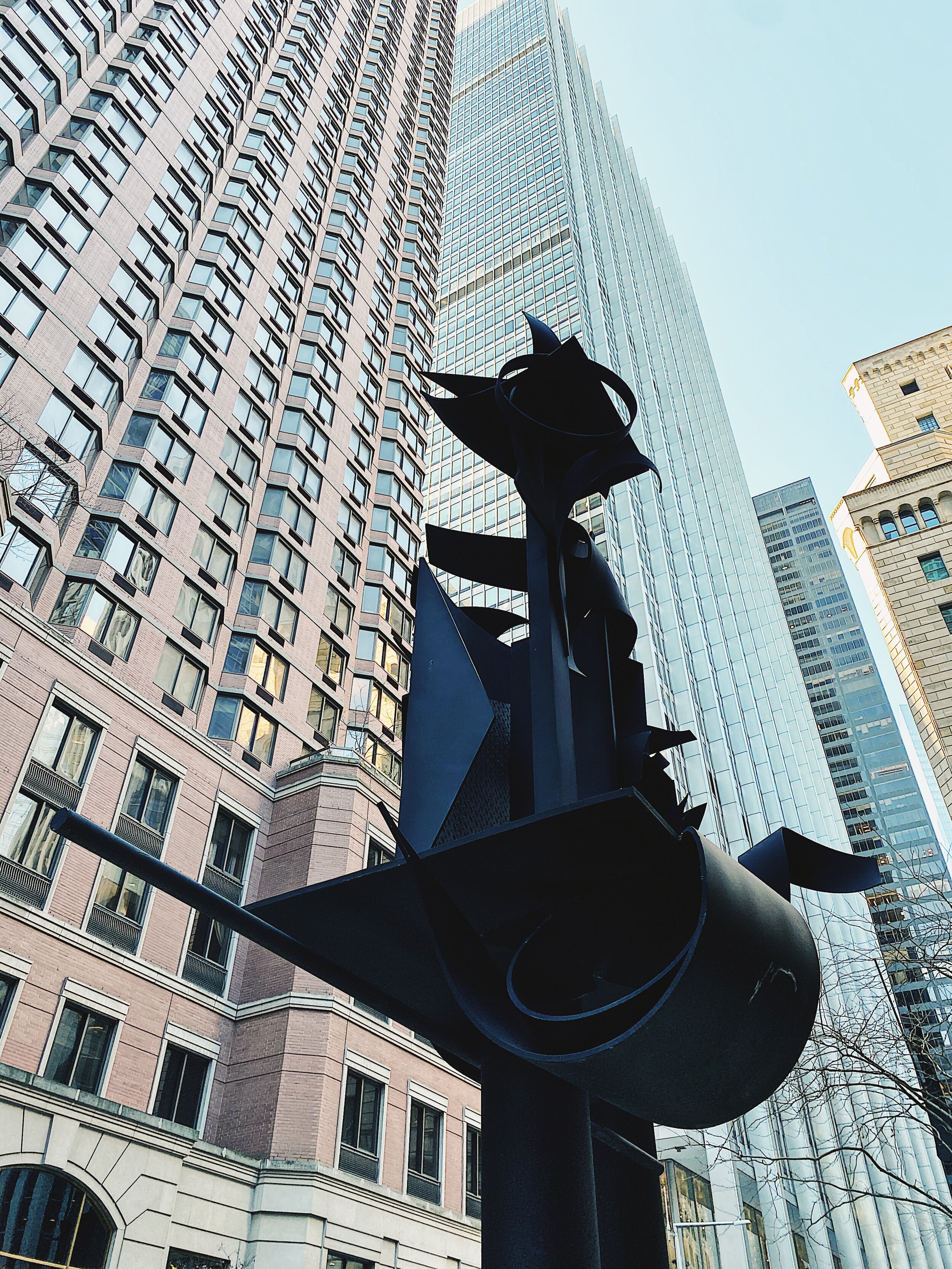COVID-Friendly Art Walks: Lower Manhattan

Many New York City museums were able to reopen in September after the pandemic lockdown was lifted. Galleries have also reopened and are allowing walk-ins or visitors by appointment. The same goes for auction houses and other cultural organizations. The arts are a crucial part of the city's fabric, and being able to see and experience art is one of the best parts of living in a place like New York. Still, with COVID-19 cases rising once more and holidays coming up, many might be apprehensive about visiting an indoor space. Luckily, our city's streets are filled with public art available to be enjoyed by everyone, and available for FREE.
One particular area that has a high concentration of public artworks is lower Manhattan. Read on for a guide to what you can expect to see, and a recommended walking route.
Stop 1. Louise Nevelson Plaza
American sculptor Louise Nevelson (1899-1988) is famous for her monumental, monochromatic sculptures, often displayed outdoors in public spaces. An excellent example of her work is located in a small triangle off of Maiden Lane named Louise Nevelson Plaza. The plaza features seven towering black sculptures entitled "Shadows and Flags." The pieces, seen together, are abstract expressions of the flags, spirals and structures that define the city's skyline.
Stop 2. Group of Four Trees by Jean Dubuffet
Like much of the art mentioned on this tour, Jean Dubuffet's (1901-1985) 'trees' are abstractions of his subject. The black and white sculpture outside of One Chase Manhattan Plaza stands out against the towering corporate offices which surround the piece. Dubuffet's signature style, almost like a child's crayon scribbles, brings a welcome whimsy to an otherwise serious-seeming group of buildings.

Stop 3. Red Cube by Isamu Noguchi
A short walk away is a giant red shape tilted on an axis, a hole through its center. Isamu Noguchi's (1904-1988) "Red Cube" is another standout, a bright red splash amidst a color palette of mostly grays and browns.
Stop 4. Joie de Vivre by Mark di Suvero
Right across from Noguchi's cube, on the edge of Zuccotti Park, is another dash of red. Instead of a solid shape, Mark di Suvero's (born 1933) Joie de Vivre is all thin lines and rounded shapes. The sculpture, which was previously installed at the Holland Tunnel's rotary, became infamous in 2011 when a protestor from the Occupy Wall Street movement climbed to the structure's very top. He was there for several hours before police escorted him down.
Stop 5. Rose by Isa Genzken
On the other side of Zuccotti Park, a rose blooms in New York. Isa Genzken's (born 1948) 26-foot tall Rose, was installed in 2018 right around the time of the 10-year anniversary of the financial crisis. However, it has never been explicitly stated that the sculpture's installation was a nod to the crisis and the subsequent birth of the Occupy Wall Street movement. This is not the only steel rose by Genzken in New York. Another can be found in the garden at the Museum of Modern Art.


Stop 6. Berlin Wall by Thierry Noir
Years after the 1961 construction of the Berlin Wall, French artist Thierry Noir (born 1958), decided to begin painting sections of it. He began to cover the wall in his signature cartoonish, brightly painted heads over the course of five years. After the wall fell in 1989, pieces of the original concrete with Noir's paintings were gifted to various cities across the world. On South End Avenue, just west of the World Trade Center Memorial, one section is available to be viewed. The face represented is immediately recognizable as Noir's, and is a reminder of the power of art to invoke change.
Stop 7. Battery Park City: Eyes by Louise Bourgeois
Near the very bottom tip of Manhattan, Louise Bourgeois' (1911-2010) deceiving sculpture can be viewed. "Eyes," two large, round balls with protruding circles are meant to evoke eyeballs and corneas, but also point us to something else. Like much of Bourgeois' work, the sculpture is also reminiscent of female anatomy, and is definitely open to interpretation.
What's your favorite piece of public art? Comment below!


